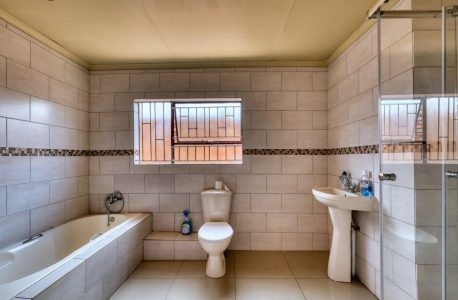Toilet plumbing systems are essential for waste removal and sanitation․ A well-designed system includes water supply, drainage, and venting․ Understanding these components ensures efficient and safe operation․ Proper installation and maintenance are crucial for preventing leaks and blockages․ A plumbing layout plan provides a clear roadmap for the entire system․
Toilet plumbing systems are critical for maintaining hygiene and sanitation in residential and commercial buildings․ These systems efficiently remove waste and supply fresh water for flushing, contributing to overall public health․ A typical toilet plumbing system comprises several key components, including water supply lines, drain pipes, and vent stacks․ Understanding how these elements work together is essential for proper installation, maintenance, and troubleshooting․
The water supply lines deliver clean water to the toilet tank, refilling it after each flush․ The drain pipes carry waste away from the toilet to the main sewer line or septic system․ Vent stacks allow air to enter the drain pipes, preventing vacuums that could impede waste flow․ Proper venting is crucial for efficient drainage and preventing sewer gases from entering the building․ A well-designed toilet plumbing system ensures reliable operation, prevents leaks and blockages, and maintains a healthy indoor environment․ Regular inspections and timely repairs are necessary to keep the system functioning optimally․

Importance of a Plumbing Layout Plan
A plumbing layout plan is crucial for the efficient and effective installation and maintenance of toilet plumbing systems․ This detailed plan serves as a roadmap, guiding plumbers and homeowners through the intricate network of pipes, connections, and fixtures․ Without a well-defined layout, the risk of errors, leaks, and costly rework significantly increases․

The plan ensures that all components are correctly positioned and connected, optimizing water flow and waste removal․ It helps prevent interference with other building systems, such as electrical wiring and HVAC ducts․ A comprehensive layout plan also aids in identifying potential issues before they arise, allowing for proactive solutions and cost savings․ Furthermore, it simplifies future maintenance and repairs by providing a clear understanding of the system’s configuration․
Whether you’re undertaking a new construction project or renovating an existing bathroom, a plumbing layout plan is an indispensable tool for ensuring a successful and long-lasting toilet plumbing system․
Essential Components of Toilet Plumbing
Toilet plumbing relies on several key components working in harmony․ The water supply line delivers fresh water to the tank, controlled by a fill valve that stops the flow once the tank reaches the appropriate level․ The flush valve releases water into the bowl when activated, initiating the flushing process․ The toilet bowl itself is designed to efficiently channel waste into the drain․
The drainpipe, typically a 3- or 4-inch pipe, carries waste away from the toilet․ A wax ring creates a watertight seal between the toilet and the flange, preventing leaks․ Vent pipes allow air to enter the drain system, preventing vacuums that can impede flow․ These vents connect to a larger network that extends to the roof, ensuring proper ventilation throughout the plumbing system․
Understanding these components is crucial for effective installation, maintenance, and troubleshooting of toilet plumbing systems․ Proper functioning of each part ensures efficient waste removal and prevents common issues like clogs and leaks․
Water Supply Lines for Toilets
Water supply lines are crucial for delivering fresh water to the toilet tank, enabling the flushing mechanism․ These lines are typically made of copper, PEX, or flexible stainless steel․ Copper pipes are durable but require soldering, while PEX offers flexibility and easy installation with crimp fittings․ Flexible supply lines simplify connections but should be inspected regularly for wear․

The standard size for toilet supply lines is 1/2 inch, ensuring adequate water flow for efficient flushing․ A shut-off valve, usually located near the toilet, allows you to turn off the water supply for maintenance or repairs․ This valve is essential for preventing flooding during emergencies․ Proper installation involves connecting the supply line to both the water source and the toilet fill valve, ensuring tight and leak-free connections․
Regularly check the supply line and connections for leaks or corrosion․ Replace any damaged components promptly to prevent water damage․ Choosing high-quality materials and following proper installation techniques will ensure a reliable and long-lasting water supply for your toilet․
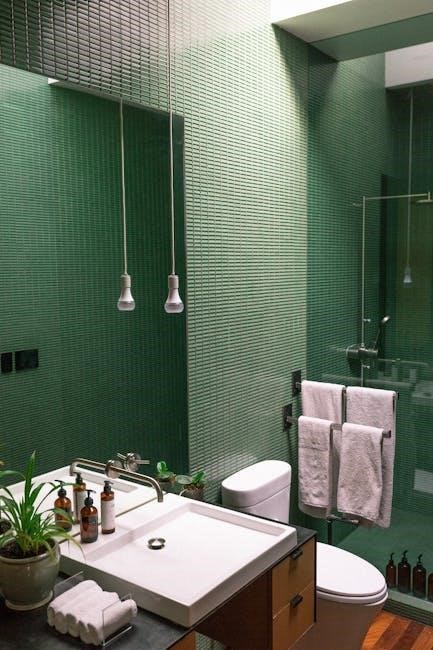
Drainage System for Toilets
The drainage system is a critical component of toilet plumbing, responsible for efficiently removing waste from the toilet bowl․ This system typically consists of a drainpipe, also known as a soil pipe, which connects the toilet to the main house drain or sewer line․ The standard size for a toilet drainpipe is 3 or 4 inches in diameter, ensuring adequate flow to prevent clogs․
The drainpipe must have a proper slope, usually a quarter-inch per foot, to facilitate gravity-assisted drainage․ The connection between the toilet and the drainpipe is sealed with a wax ring, which prevents sewer gases from entering the bathroom․ It is essential to ensure the wax ring is properly seated during installation to avoid leaks and odors․
Regular maintenance of the drainage system includes avoiding flushing non-flushable items, such as paper towels or feminine products, which can cause blockages․ If a clog occurs, a plunger or toilet auger can be used to clear the obstruction․ In more severe cases, a professional plumber may be needed to inspect and clear the drain line․
Ventilation in Toilet Plumbing
Ventilation is a vital aspect of toilet plumbing, often overlooked but crucial for maintaining a functional and hygienic system․ The primary purpose of ventilation is to regulate air pressure within the drainage system, preventing the formation of vacuums that can siphon water from toilet bowls and other plumbing fixtures․ This siphoning action can lead to unpleasant odors entering the bathroom and disrupting the proper functioning of the plumbing․
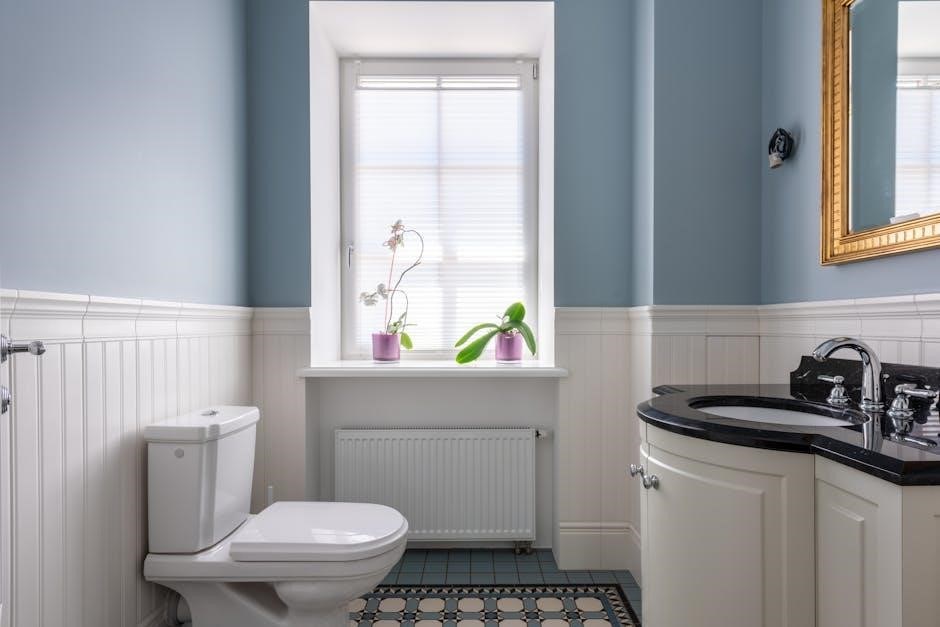
The ventilation system typically consists of a network of vent pipes that extend from the drainage system to the outdoors, usually through the roof․ These vent pipes allow air to enter the plumbing system, equalizing pressure and ensuring smooth drainage․ Without proper ventilation, the negative pressure created by flushing a toilet can pull water from the trap of nearby sinks or showers, compromising the effectiveness of these fixtures․
Properly installed vent pipes also help to remove sewer gases from the plumbing system, preventing them from accumulating and posing a health hazard․ Regular inspection of vent pipes is essential to ensure they are free from obstructions, such as leaves or debris․ Blocked vent pipes can lead to poor drainage and the buildup of unpleasant odors, requiring prompt attention to maintain a healthy and efficient plumbing system․
Standard Toilet Rough-in Dimensions
Standard toilet rough-in dimensions are crucial for ensuring proper toilet installation and functionality․ These dimensions refer to the distance from the finished wall to the center of the toilet’s drainpipe, typically 12 inches․ However, variations exist, with 10-inch and 14-inch rough-in options available to accommodate different bathroom layouts and plumbing configurations․ Accurate measurement of the rough-in dimension is essential before purchasing a toilet to avoid installation issues․
When planning a bathroom renovation or new construction, considering the rough-in dimension is vital to ensure the toilet fits properly within the designated space․ A toilet with the wrong rough-in dimension may not align correctly with the drainpipe, leading to costly plumbing modifications․ It’s recommended to consult local plumbing codes and guidelines to ensure compliance with regulations regarding toilet placement and rough-in dimensions․
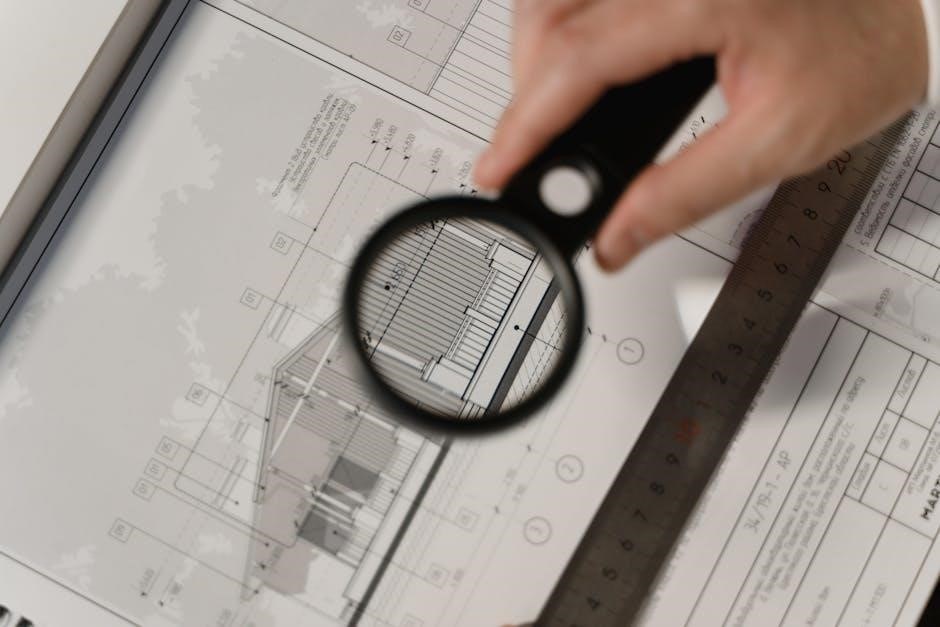
Manufacturers often provide detailed specifications for their toilets, including the required rough-in dimension and other relevant measurements․ Careful attention to these specifications can prevent installation problems and ensure the toilet functions as intended․ In situations where the existing rough-in dimension doesn’t match the desired toilet, offset flanges or other plumbing solutions may be necessary to achieve a proper fit․ Accurate rough-in dimensions are key to a successful toilet installation․
Common Toilet Types and Plumbing Considerations
Common toilet types include two-piece, one-piece, wall-hung, and dual-flush models, each presenting unique plumbing considerations․ Two-piece toilets, with a separate tank and bowl, are generally more affordable and easier to install, but may require more space․ One-piece toilets offer a sleek, modern design and are easier to clean, but tend to be more expensive․ Wall-hung toilets save floor space and offer adjustable height, but require a sturdy wall frame and specialized plumbing․
Dual-flush toilets provide options for partial or full flushes, conserving water but potentially requiring adjustments to plumbing to ensure optimal performance․ When selecting a toilet type, consider factors such as water usage, flushing efficiency, space constraints, and aesthetic preferences․ Each toilet type has specific rough-in dimensions and drainpipe requirements that must be considered during plumbing installation․ Local plumbing codes dictate regulations for toilet placement, venting, and water supply connections․
Proper planning and adherence to these guidelines are essential for a successful and compliant installation․ The choice of toilet type can also impact the complexity and cost of the plumbing system․ Consulting with a qualified plumber is recommended to ensure that the selected toilet type is compatible with the existing plumbing infrastructure and meets all applicable codes and standards․ Careful consideration of these factors ensures a functional and efficient toilet system․
DIY vs․ Professional Plumbing Installation
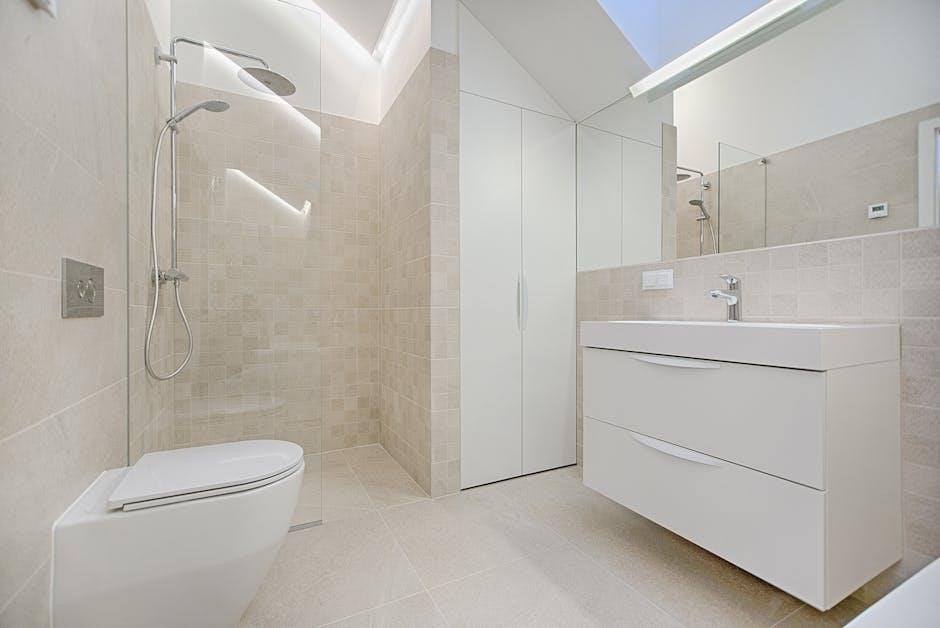
Deciding between DIY and professional plumbing installation requires careful consideration of skills, experience, and local regulations․ DIY installation can save money, but requires a thorough understanding of plumbing systems, codes, and safety procedures․ Incorrect installation can lead to leaks, water damage, and costly repairs․ It is essential to have the right tools, materials, and a detailed plumbing layout plan before starting a DIY project․
Professional plumbers possess the expertise, licenses, and insurance to ensure proper installation and compliance with regulations․ They can handle complex plumbing tasks, diagnose problems accurately, and provide warranties for their work․ While professional installation costs more upfront, it can prevent future issues and provide peace of mind․ Complex plumbing projects, such as relocating drain lines or installing wall-hung toilets, are best left to professionals․
For simple tasks, like replacing a toilet fill valve, a DIY approach may be suitable․ However, any work involving water supply lines or drainpipes requires caution and precision․ Evaluate your skills honestly, and if unsure, consult with a professional․ Failure to comply with plumbing codes can result in fines and require costly rework․ A well-planned plumbing layout plan is essential whether you choose DIY or professional installation․ Prioritize safety and compliance with local regulations for a successful outcome․
Troubleshooting Common Toilet Plumbing Issues
Addressing common toilet plumbing issues promptly can prevent significant damage and inconvenience․ A frequently running toilet often indicates a faulty fill valve or flapper․ Inspect these components for wear and tear, replacing them as needed․ A clogged toilet may require a plunger to dislodge the obstruction․ For stubborn clogs, a toilet auger can be used to break up or retrieve the blockage․
Leaks around the base of the toilet can be caused by a damaged wax ring․ Replacing the wax ring involves removing the toilet, cleaning the flange, and installing a new ring․ Ensure the toilet is properly seated and secured to the floor․ Weak flushing power can result from clogged rim jets or a low water level in the tank․ Clean the rim jets with a wire or pin to improve water flow․ Adjust the fill valve to increase the water level in the tank․
Unusual noises, such as gurgling or whistling, may indicate ventilation problems or issues with the water supply lines․ Check the vent pipe for obstructions and ensure proper airflow․ Inspect the water supply valve for leaks or damage․ If problems persist, consult a qualified plumber․ Regular maintenance, including cleaning and inspecting components, can help prevent many common toilet plumbing issues․ Always turn off the water supply before attempting repairs to avoid flooding․ Consulting a plumbing layout plan can help identify potential issues․
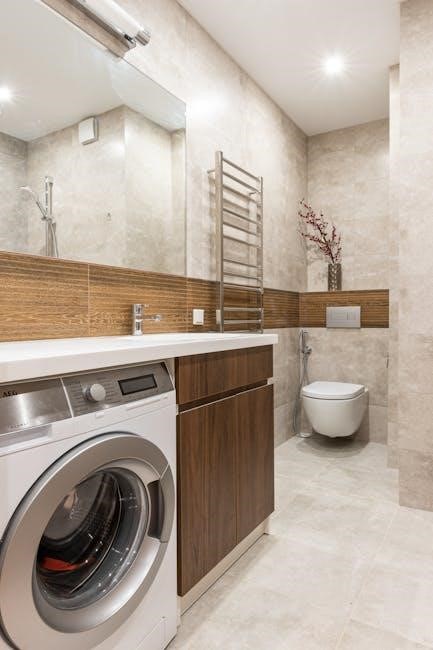

PDF Resources for Toilet Plumbing Layouts
Accessing PDF resources for toilet plumbing layouts can significantly aid in planning and executing plumbing projects․ Numerous websites offer downloadable PDFs containing detailed diagrams, specifications, and installation guidelines․ These resources often include standard rough-in dimensions, component lists, and troubleshooting tips․ Professional plumbing organizations and manufacturers frequently provide these PDFs to assist both DIY enthusiasts and professional plumbers․
When searching for PDF resources, ensure they are from reputable sources to guarantee accuracy and compliance with local plumbing codes․ Look for diagrams that clearly illustrate water supply lines, drainage systems, and ventilation setups․ Detailed layouts should include measurements and material specifications, aiding in proper installation and minimizing errors․ Some PDFs also offer step-by-step instructions for common plumbing tasks, such as toilet installation and repair․
These resources can be invaluable for visualizing the entire plumbing system and understanding how each component interacts․ They can also assist in identifying potential issues before starting a project, saving time and money․ Consider utilizing PDF resources for various toilet types and plumbing configurations to broaden your understanding and ensure a successful outcome․ Always cross-reference information with local plumbing codes and regulations to ensure compliance; PDF resources offer a convenient and comprehensive way to access vital information for toilet plumbing layouts․

